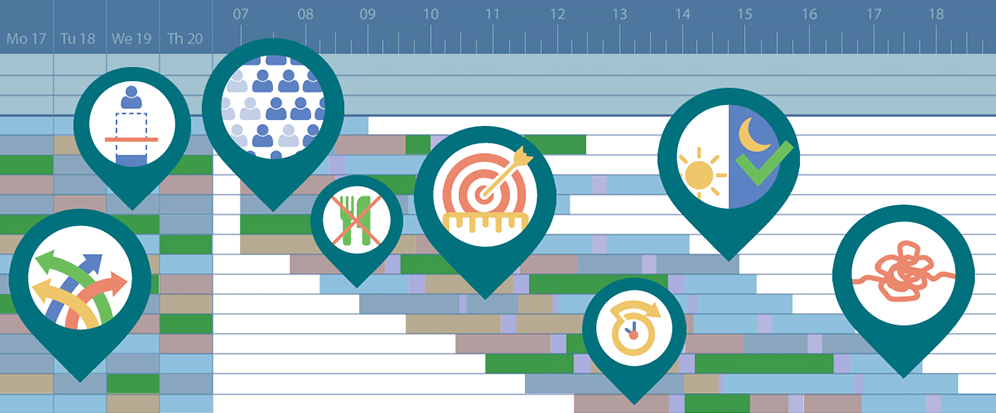When discussing the future of WFM, we usually associate it with automating operations. We think of AI-driven WFM systems that deliver enhanced processes, precise forecasts, optimized schedules, and automated responses. As AI systems mature, they will further impact the contact center industry. But the opportunity here lies in the how. For WFM leaders, this means shifting their focus from purely operational thinking to experience design.
In recent blogs, we discussed how integrating WFM data is the key to unlocking strategic decision-making and why choosing a WFM solution that grows with your business is essential for building future-ready operations. This blog explores how you can leverage your modern WFM software to design systems that enhance the overall customer experience.
The impact of AI can already be observed in how contact centers serve their customers. If you’re interested in how AI drives operational efficiency, e.g., with IVR and self-service systems, we cover this in depth here.
However, the practical application of AI in customer service is not limited to only automation of repetitive tasks. When done right, it can open up new opportunities to deliver excellence at every interaction.
In a recent interview with weWFM, James Kimani, Senior Resource Planning Analyst from The DDC Group, shares his perspective on how you can move beyond operational efficiency and use AI to drive real customer connection. Here are the top three takeaways:
1. Personalizing customer service by matching customers and agents with shared interests
In Kimani's opinion, one of the most promising applications of AI in workforce management is intelligent call routing based on personalized customer information. Leveraging advanced machine learning (ML) models, you can analyze customer preferences to better match customers with agents having similar interests. This can help to improve:
- Customer satisfaction scores (CSAT): By minimizing the likelihood of call transfers.
- First-call resolution (FCR): By routing customers to the most suitable agents.
- Agent engagement: By fostering more natural and rewarding conversations.
Consider, for example, matching a football fan with an agent who likes the same team. Or matching agents based on regional accents. These small things can have a positive impact on the overall customer experience.
"It’s the small things of human interaction that can be enhanced with ML and AI. If you get that connection right, you’re more likely to upsell or give better service. That’s what good WFM leaders should be thinking about."
2. Adapting self-service interactions to customer emotions
Another application of AI is using ML models and natural language processing (NLP) to adapt IVR and chatbot scripts based on sentiment analysis, behavior history, and customer profiles. This turns scripted interactions into more humanized, smart conversations, making the experience feel less isolated.
Here are a few ways you can improve self-service portals with AI:
- Smart IVR Flows: By leveraging interaction data, for example, how many escalations or first call resolutions (FCR) the customer had in the past, you can adapt menus and FAQs to reduce automation fatigue.
- Dynamic conversations: By using real-time sentiment data, you can adapt the bot scripts to feel more empathetic.
- Proactive abandonment assistance: By identifying friction points and triggers in real-time and alerting agents to take over before the customers abandon the call.
When designing WFM systems using AI, it is important to ensure that they support human interaction. Kimani shares an example of a fintech company where customers got stuck in the self-service portal and couldn't get through to human agents. This led to increased dissatisfaction, a high abandonment rate, and a direct hit to their bottom line. That’s why it's important to consider who you are designing the systems for, and the purpose should be clear.
“It's about striking that balance between how much technology we use to help customers self-serve vs making sure that we're not losing that human connection by putting all this technology or these bots ahead of their speaking to a real person.”
3. Preventing agent burnout with real-time support
Removing mundane tasks and providing opportunities for continuous growth can make agents feel more confident, focused, and fulfilled in their roles. Practical ways in which AI can help enhance the day-to-day activities of your agents include:
- Multi-skill training: By identifying skills gaps faster than traditional processes, you can offer personalized, targeted training to agents. This keeps learning relevant and helps teams easily meet changing demands, even in complex environments where skill-based planning is required.
- Delegation of routine tasks: By automating repetitive tasks such as customer inquiries through chatbots, responding to emails, etc., you can free up agents to do higher-value activities that require human judgment and creativity.
- Real-time support: By providing real-time prompts and context-aware suggestions based on keywords and sentiment, you can give agents the confidence to act decisively.
Designing human-centric WFM systems with AI
As AI becomes integral to contact centers, WFM leaders must prioritize designing systems that balance automation with human connection. The key principles for this include:
- Choice-first design: Let customers choose whether they want to self-serve or talk to human agents.
- Context-aware conversations: Implement context-aware conversations with real-time intelligence, whether it's automated responses or live calls.
- Continuous learning: Develop feedback loops that align with evolving customer expectations to deliver exceptional service consistently.
For a deeper dive into how these ideas play out in the real world, listen to our recent interview with James Kimani, as he shares his insights about the future of WFM and how you can start preparing for it today.














